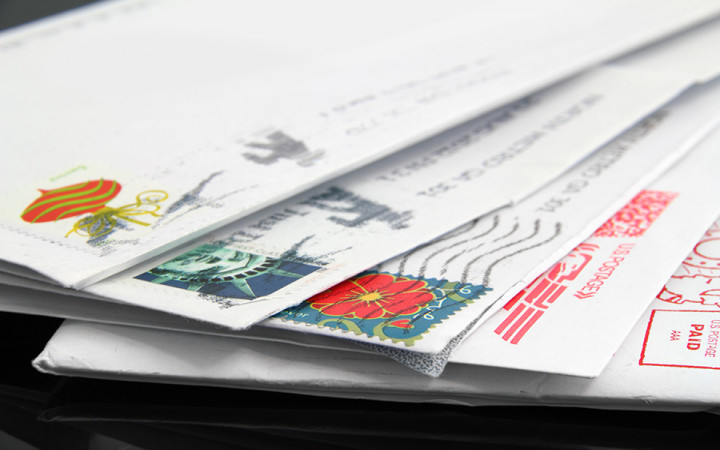Today’s Wonder of the Day was inspired by Will. Will Wonders, “How did people send letters when there were no cars or mailboxes?” Thanks for WONDERing with us, Will!
If you want to communicate a to a friend, how do you go about it? If you have a smartphone, you might just text your friend. Others might use their computer to send a via email.
Various forms of social media and their associated apps also contain messaging functions. For example, you could send a funny photo via Snapchat, Facebook, Instagram, or Twitter with a caption your .
Before email, however, your parents and other older adults had to survive with regular old mail — without the "e." That's right. They had to put ink to paper, it into an envelope, and drop it in the mail.
A letter would just sit there, though, unless it had one other important piece of adhesive paper attached to it. That's right. We're talking about the postage stamp.
Handwritten letters, envelopes, and stamps might seem like a thing of the past, but they're not gone entirely. A quick check of your mailbox on a daily basis will probably reveal that your family still receives a variety of communications the old-fashioned way.
Many of the things you receive in the mail might be considered "junk mail" or other forms of unsolicited advertisements. These pieces of mail often have preprinted postage bar codes or other forms of prepaid postage that take the place of stamps.
Personal letters, Christmas cards, birthday party invitations, and other types of personal mail will usually have postage stamps on them. If you send any such items, you will also need to have stamps on hand to attach to the envelopes before you drop them in the mail.
So how did this whole system of postage stamps get started in the first place? The first postage stamp dates back to England in 1840, when Sir Rowland Hill's "Penny Black" became the first postage stamp that would get any half-ounce letter sent anywhere in the British Isles.
In the United States, people had to take letters to a Post Office. The postmaster would calculate postage based upon the number of sheets of paper used in the letter and the distance it would travel.
Postage would then be marked in the corner of the letter, along with whether it was paid in advance or was to be collected from the recipient. Eventually, private mail carriers, such as Alexander M. Greig's City Despatch Post, began using adhesive stamps to prepay postage.
The U.S. Post Office Department bought Greig's business and continued the practice of using adhesive stamps for prepaid postage. U.S. postage rates were finally standardized in 1845, and some postmasters, such as New York City's Robert H. Morris, developed special stamps for prepaid postage. These have since become known as Postmasters' Provisionals.
Finally, on March 3, 1847, the U.S. Congress authorized the production and sale of U.S. postage stamps. The first general issue postage stamps went on sale on July 1, 1847, in New York City.
There were two initial stamps available: a five-cent stamp featured Benjamin Franklin and a ten-cent stamp depicted George Washington. These were the only stamps available until 1856, when a five-cent Thomas Jefferson stamp was issued.
It was also in 1856 when the U.S. government made government-issued stamps a requirement. Until then, other payment methods had still been used occasionally.
The cost of a first-class postage stamp has risen steadily over the years. In 1885, you could mail a one-ounce letter anywhere in the United States for two cents. A century later, that rate had risen to 22 cents in 1985.
As of April 5th, 2018, the cost of a first-class postage stamp is 50 cents. To offset future cost increases, the Postal Service now sells "forever" stamps. They can be purchased in any quantity at the current rate and then used forever even if the price of a stamp goes up in the future.




